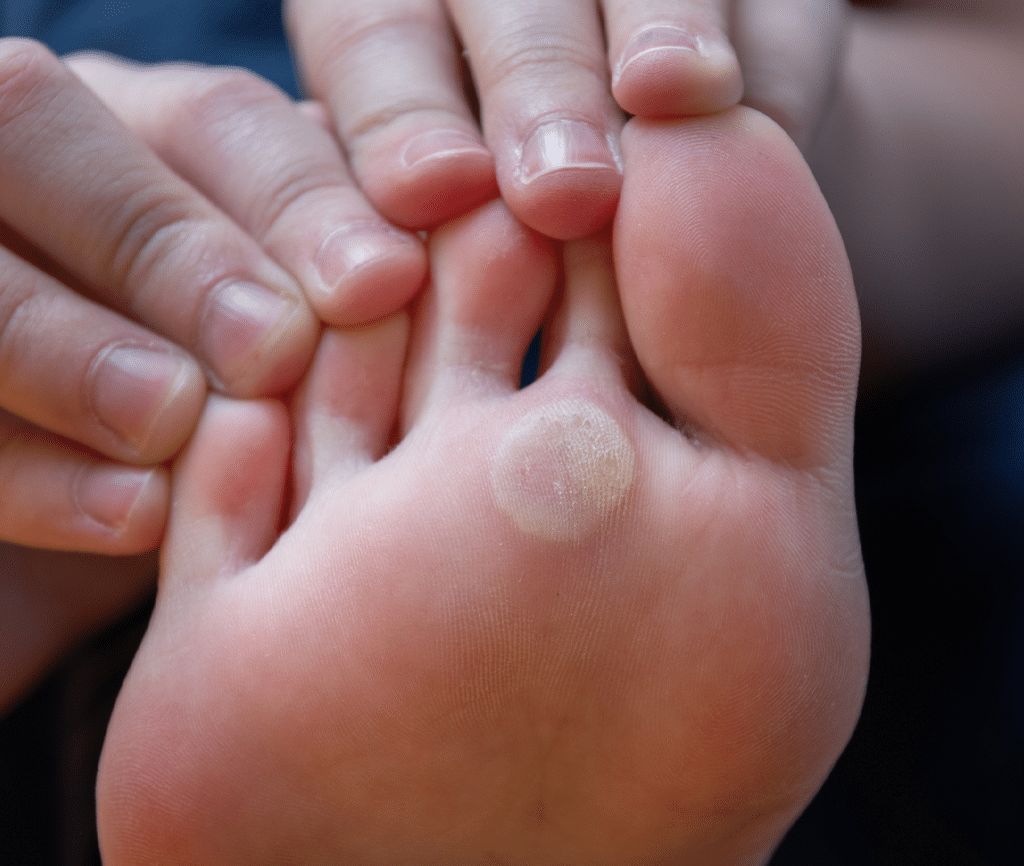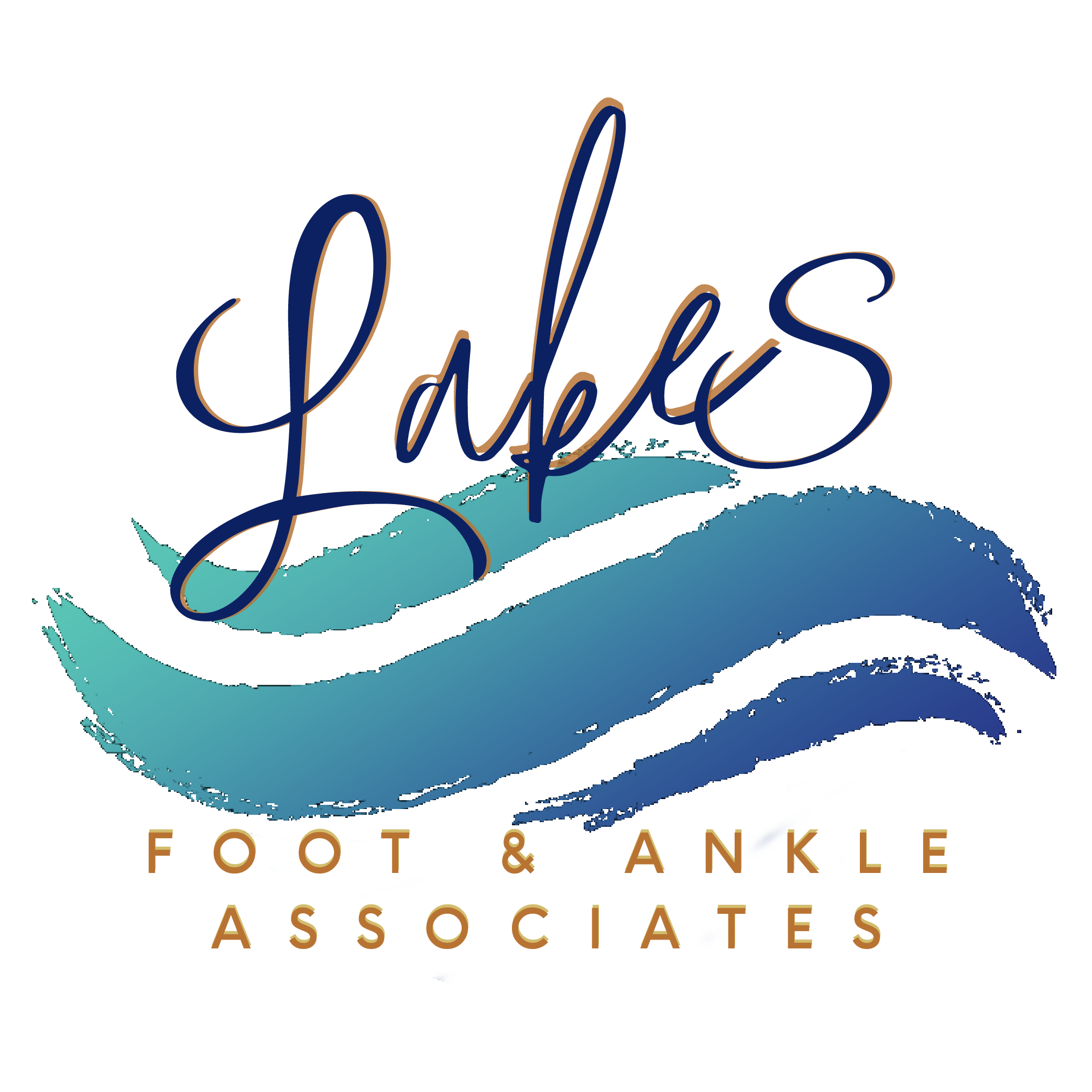Expert Corns & Calluses Treatment in Commerce Twp, MI
Every step shouldn’t hurt—and yet, corns and calluses can make even simple movements feel uncomfortable or downright painful. Whether you’re training for your next 5K, chasing after grandkids, or just want to walk through the grocery store without wincing, dealing with corns and calluses can put a frustrating pause on your daily life.
At Lakes Foot & Ankle Associates, we love helping active people like you find real, lasting relief. If you’re looking for a podiatrist for corns and calluses in Commerce Township, our team delivers advanced, personalized care you can trust. From non-surgical removal to custom orthotics, we’ll help you get back on your feet—comfortably and confidently.

What Causes Corns and Calluses?
Corns and calluses form when your skin tries to protect itself from too much pressure or friction. That might sound helpful, but over time, this toughened skin can cause pain—especially if it’s pressing against a bone or joint in weight-bearing areas like the heel or ball of the foot, or when they form on the top of the toes.
Most corns and calluses on feet develop from everyday habits—like wearing poorly fitting shoes, walking or running with abnormal gait mechanics, or spending long hours on your feet. These activities create repeated pressure on the skin, which causes your body to build up protective layers.
If you have high arches, flat feet, or a foot deformity like bunions or hammertoes, you might be more prone to forming hard skin in spots that put pressure on bones and joints.
How to Prevent Corns and Calluses
- Wear well-fitted shoes
- Use cushioned insoles or pads
- Avoid high-heeled or narrow-toed shoes
- Keep feet clean & moisturized
- Rotate your shoes
- Address foot mechanics with help from our podiatrists
How to Remove Corns and Calluses
When you’re dealing with painful areas of thickened skin on your feet, it’s tempting to take matters into your own hands. But at-home trimming or scraping can do more harm than good—especially if you have underlying conditions like diabetes or poor circulation. The best treatment for corns and calluses ultimately depends on your unique anatomy, lifestyle, and foot structure.
At Lakes Foot & Ankle Associates, we’ll first examine the cause of the problem. Sometimes, it’s the result of pressure from a bone or joint. Other times, it’s due to shoe fit or walking patterns. Once we understand the root issue, we’ll create a personalized plan that may include gentle debridement, padding, shoe recommendations, or long-term support like orthotics.
Our goal is to relieve your discomfort and prevent it from coming back. You don’t have to just live with it—or keep relying on temporary fixes. Let’s help you get back to doing what you love without pain in every step.
You Have Options! Top Callus Removal Treatments
Though they’re often grouped together, corns and calluses are not the same—and understanding the difference is key to treating them effectively.
Corns tend to be small, round, and well-defined, often forming on non-weight-bearing parts of the foot—like the top of the toes or between them. There are different types of corn, including hard corns, which are dense and firm, and soft corns, which tend to stay moist and develop between toes. Both can become a painful corn if they press on nerves or joints.
Calluses, on the other hand, are broader areas of thick, hardened skin that typically appear on the soles of the feet—especially on layers of skin that absorb the most pressure. They may not hurt at first, but over time, they can become painful or start to crack. Unlike corns, calluses tend to feel more like a dull ache or pressure than a sharp sting.
When corns and calluses keep coming back, it usually means something deeper is going on—literally. In many cases, recurring thickened skin is caused by an underlying biomechanical issue, like abnormal gait patterns, misaligned joints, or structural problems like bunions or flat feet. Even the most effective surface treatments won’t stick if the pressure source isn’t addressed.
At Lakes Foot & Ankle Associates, we begin by identifying that underlying cause through a full exam and gait analysis. From there, we build a personalized treatment plan. This often includes in-office debridement to remove built-up skin, pressure offloading with pads or shoe modifications, and long-term support like custom orthotics to redistribute weight more evenly across the foot.
For patients with stubborn or deeply rooted lesions, we may also explore minor surgical corrections to address bone alignment or joint positioning. The goal isn’t just short-term relief—it’s keeping you active and pain-free for the long haul. Recurring corns and calluses don’t have to be a permanent part of your life, and we’ll help you break that cycle for good.
Wearing shoes that fit properly is one of the best ways to treat and prevent foot problems. We recommend looking for shoes with a wide, deep toe box to give your toes space to move freely. Soft, seamless linings help prevent friction, while cushioning in the sole can absorb shock and relieve pressure under the ball and heel.
Athletic shoes, walking sneakers, or orthopedic footwear brands are great options for many patients, especially if you’re on your feet a lot or engage in high-impact activities like running or hiking.For added protection, we often pair shoe recommendations with custom inserts or orthotics. These give you an extra layer of support while helping your foot function in a more balanced, natural way.
You’ve probably seen shelves full of corn and callus products at your local pharmacy—pads, cushions, medicated creams, pumice stones, and even foot files. While some over-the-counter treatment options can offer short-term relief, they’re often limited in what they can really accomplish.
Some people try home remedies for corns and calluses like vinegar soaks, foot files, or essential oils. These home treatments may offer brief relief but rarely address the root cause. If you do try something at home, soak your feet first to soften the skin—but avoid cutting or using harsh chemicals.
At-home foot care for corns and calluses might help manage mild symptoms, but if they’re persistent or painful, they’re best evaluated by a podiatrist. We’ll not only remove the buildup safely but also offer long-term strategies like custom shoe inserts so you’re not stuck in an endless loop of buying drugstore treatments that only go skin deep.
Absolutely. If you’re living with diabetes, any change in your feet—corns, calluses, blisters, or even dry skin—deserves special attention. Diabetes can reduce blood flow and damage nerves in your feet, making it harder to feel pain or notice injuries as they develop. That means something as simple as a callus can hide a sore underneath or turn into a wound without you even realizing it.
That’s why diabetic foot care for corns and calluses is never something to handle on your own. Never attempt to cut or shave thick skin at home, and avoid using medicated pads unless advised by a doctor. At our office, we provide diabetic-friendly foot care that focuses on safe, gentle methods. We use sterile tools, take time to check the surrounding skin and circulation, and work with you to monitor any changes over time.
Let’s Get You Back on Your Feet
You don’t have to live with foot pain or keep patching the same problem over and over. Whether you’re dealing with stubborn corns, painful calluses, or both, we’re here to help you find corn and callus pain relief lasting relief—and get you back to the activities you love. From non-surgical care to custom solutions, you’ve got options. Let’s talk about the one that’s right for you.
